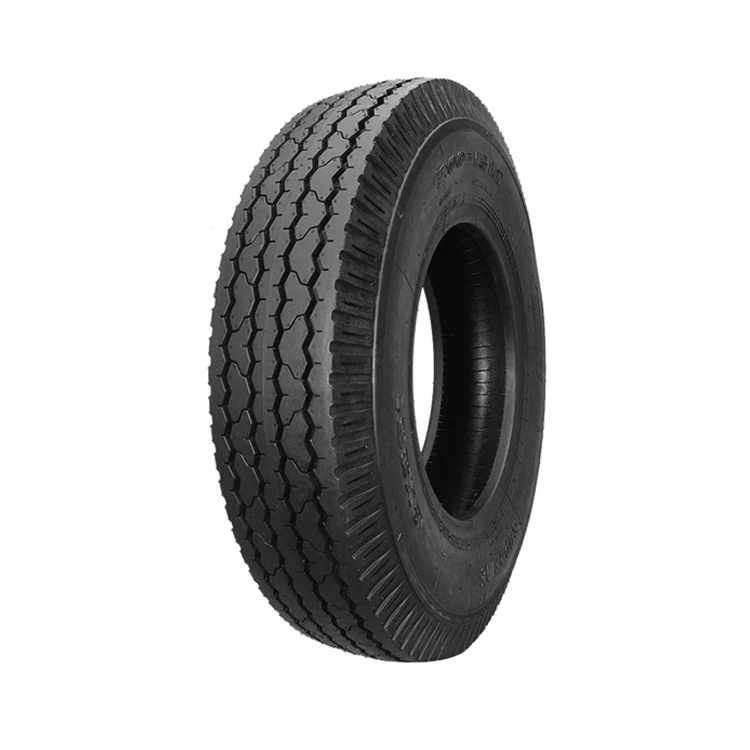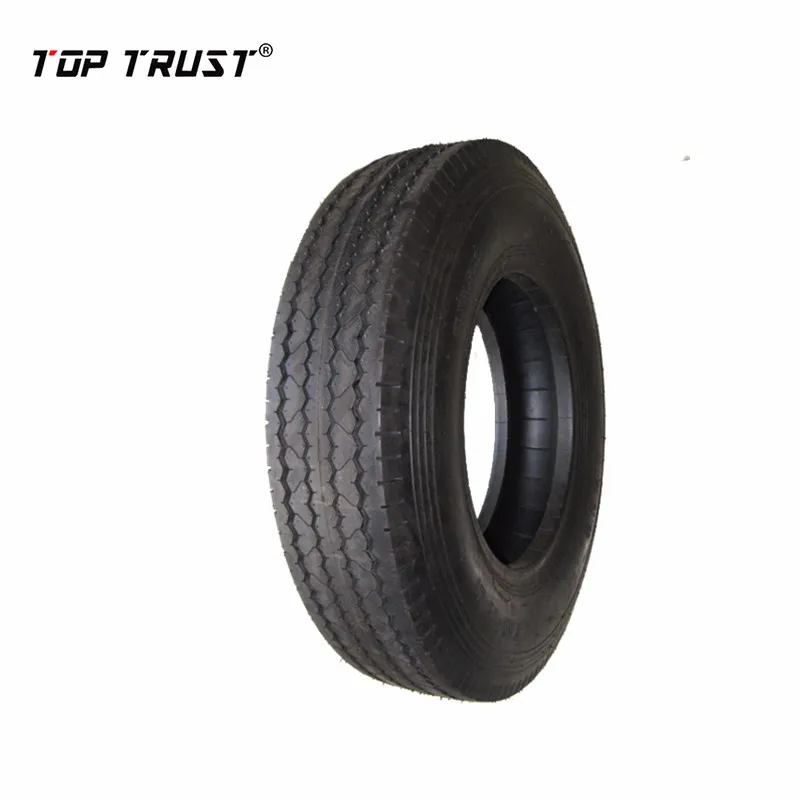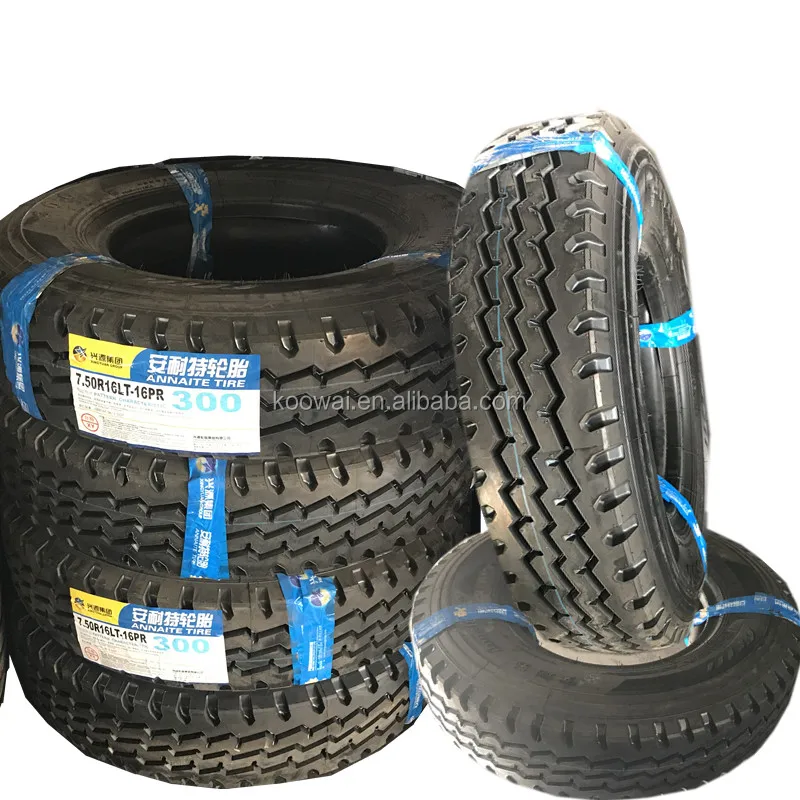Features and Benefits:
Category: Light Truck Tires
| DUAL LOAD | SINGLE LOAD | |||||||||||||
|---|---|---|---|---|---|---|---|---|---|---|---|---|---|---|
| SIZE | FIG | PLY RATING | PRODUCT CODE | TYPE | TREAD DEPTH | OVERALL DIAMETER | RIM | OVERALL WIDTH | MAX LOAD | RATED COLD INFLATION | MAX LOAD | RATED COLD INFLATION | WT | |
| E78-14LT | A | D/8 | LA3A5 | HWY | 15/32 | 26. 50 50 | 5.5X14 | 7.70 | 1500 | 60 | 1710 | 60 | 27 | |
| 8-14.5 LT | A | F/12 | LA5TH | HWY | 14/32 | 28.20 | 6X14.5 | 8.50 | 2460 | 100 | 2790 | 100 | 39 | |
| 8-14.5 LT | A | G/14 | LA5TJ | HWY | 14/32 | 28.20 | 6X14.5 | 8.50 | NA | NA | 3020 | 115 | 40 | |
| 9-14.5LT | B | G/14 | LA5J6 | HWY | 12/32 | 28.00 | 7X14.5 | 9.20 | 3080 | 115 | 3505 | 115 | 42 | |
| G78-15LT | A | C/6 | LA3B3 | HWY | 15/32 | 28.20 | 6X15 | 8.20 | 1460 | 45 | 1660 | 45 | 32 | |
| H78-15LT | A | C/6 | LA3C3 | HWY | 16/32 | 29.00 | 6X15 | 8.60 | 1610 | 45 | 1830 | 45 | 33 | |
| L78-15LT | A* | C/6 | LF8h4 | HWY | 16/32 | 29. 90
90 | 6.5X15 | 9.10 | 1790 | 45 | 2030 | 45 | 37 | |
| 6.70-15LT | D | C/6 | LA113 | HWY | 15/32 | 28.50 | 5X15 | 7.40 | 1355 | 45 | 1530 | 45 | 27 | |
| 7.00-15LT | A | C/6 | LA223 | HWY | 15/32 | 29.60 | 5.5X15 | 7.90 | 1520 | 45 | 1720 | 45 | 32 | |
| 7.00-15LT | A | D/8 | LA225 | HWY | 15/32 | 29.60 | 5.5X15 | 7.90 | 1800 | 60 | 2040 | 60 | 32 | |
| 6.50-16LT | D | C/6 | LA133 | HWY | 12/32 | 29.90 | 4.5X16 | 7.40 | 1420 | 50 | 1610 | 50 | 28 | |
| 7.50-16LT | A | D/8 | LA245 | HWY | 15/32 | 32.00 | 6X16 | 8.70 | 2140 | 65 | 2440 | 65 | 38 | |
7. 50-16LT 50-16LT | A | E/10 | LA247 | HWY | 15/32 | 32.00 | 6X16 | 8.70 | 2440 | 80 | 2780 | 80 | 40 | |
| 8.00-16.5LT | A | D/8 | LA4A5 | HWY | 16/32 | 28.60 | 6X16.5 | 7.90 | 1800 | 60 | 2045 | 60 | 32 | |
| 8.75-16.5LT | A | D/8 | LA4B5 | HWY | 16/32 | 29.80 | 6.75X16.5 | 9.00 | 2070 | 60 | 2350 | 60 | 37 | |
| 8.75-16.5LT | A | E/10 | LA4B7 | HWY | 16/32 | 29.80 | 6.75X16.5 | 9.00 | 2360 | 75 | 2680 | 75 | 40 | |
| 9.50-16.5LT | A | D/8 | LA4C5 | HWY | 17/32 | 30.60 | 6.75X16.5 | 9.30 | 2445 | 60 | 2780 | 60 | 41 | |
| 9.50-16.5LT | A | E/10 | LA4C7 | HWY | 17/32 | 30. 60 60 | 6.75X16.5 | 9.30 | 2790 | 75 | 3170 | 75 | 45 | |
| 10-16.5LT | A | D/8 | LA4D5 | HWY | 17/32 | 30.40 | 8.25X16.5 | 10.20 | 2420 | 60 | 2750 | 60 | 42 | |
| 12-16.5LT | A | D/8 | LA4E5 | HWY | 18/32 | 32.20 | 9.75X16.5 | 11.90 | 2640 | 45 | 3000 | 45 | 51 | |
| 12-16.5LT | C | E/10 | LC3E7 | HWY | 18/32 | 32.20 | 9.75X16.5 | 11.90 | 3120 | 60 | 3550 | 60 | 55 | |
| 12-16.5LT | C | F/12 | LC3EL | HWY | 18/32 | 32.20 | 9.75X16.5 | 11.90 | 3560 | 75 | 4045 | 75 | 58 | |
| 12-16.5LT | C | G/14 | LC3TV | HWY | 18/32 | 32.20 | 9.75X16.5 | 11. 90 90 | 3950 | 90 | 4490 | 90 | 63 | |
| 8-17.5LT | A | D/8 | LA565 | HWY | 14/32 | 31.40 | 6X17.5 | 8.00 | 2155 | 65 | 2455 | 65 | 36 | |
* Non-stocking – Slightly different tread design
| DUAL LOAD | SINGLE LOAD | ||||||||||||
|---|---|---|---|---|---|---|---|---|---|---|---|---|---|
| SIZE | FIG | PLY RATING | PRODUCT CODE | TYPE | TREAD DEPTH | OVERALL DIAMETER | RIM | OVERALL WIDTH | MAXIMUM LOAD | RATED COLD INFLATION | MAXIMUM LOAD | RATED COLD INFLATION | WT. |
| 7.00-15LT* | A | C/6 | LA224 | HWY | 15/32 | 29.60 | 5.5X15 | 7.90 | 1520 | 45 | 1720 | 45 | 29 |
7. 00-15LT 00-15LT | A | D/8 | LA226 | HWY | 15/32 | 29.60 | 5.5X15 | 7.90 | 1800 | 60 | 2040 | 60 | 29 |
| 6.50-16LT | D | C/6 | LA134 | HWY | 12/32 | 29.90 | 4.5X16 | 7.40 | 1420 | 45 | 1610 | 45 | 24 |
| 7.50-16LT | A | D/8 | LA246 | HWY | 15/32 | 32.00 | 6X16 | 8.70 | 2140 | 60 | 2440 | 60 | 34 |
| 7.50-17 | B | D/8 | LA5J7 | HWY | 16/32 | 34.50 | 6X17 | 8.50 | 2460 | 65 | 2800 | 75 | 38 |
| 7.00-18 | C | D/8 | LA5J9 | HWY | 16/32 | 33.80 | 5.5X18 | 7.90 | 2270 | 65 | 2590 | 75 | 37 |
| 7.50-20 | D | E/10 | MA2A2 | HWY | 13/32 | 37. 40 40 | 6X20 | 8.90 | 3100 | 80 | 3530 | 90 | 56 |
*NON-STOCKING ITEM
DO NOT, UNDER ANY CIRCUMSTANCES, MOUNT ANY SPECIALTY TIRES OF AMERICA PRODUCED TIRE (STA TIRE) ON A WHEEL THAT DOES NOT MEET TIRE AND RIM ASSOCIATION STANDARDS.
Use of STA tires on wheels that do not meet Tire & Rim Association standards can cause the assembly to fail and burst with explosive force sufficient to cause serious personal injury or death.
STA tires are intended to be used exclusively on tire rims designed and manufactured to comply with Tire & Rim Association standards and specifications. Any person using STA tire on wheels that do not meet Tire & Rim Association standards and specifications or on damaged wheels assumes responsibility for these dangerous actions and agrees to reimburse Specialty Tires of America (and its affiliated companies) for all loss, damage, or cost it may suffer because of such actions.
Wheel standards and specifications can be obtained by writing to: Tire & Rim Association, 175 Montrose West Avenue, Suite 150, Copley, Ohio 44321 or by consulting your rim manufacturer. Consult your rim manufacturer to determine if your rim can be used with the tire selected for your application.
IT IS ABSOLUTELY IMPORTANT THAT TIRE MOUNTING IS PERFORMED ONLY BY SPECIALLY TRAINED PERSONNEL USING PROPER TOOLS AND PROCEDURES.
Failure to follow safe mounting procedures can result in faulty positioning of the tire and cause the assembly to burst with explosive force sufficient to cause serious personal injury or death.
Clean rim and lubricate beads with rubber lubricant.
Center the tire so that the bead is clear of the wheel well before inflating to prevent broken beads.
Always lock rim on mounting machine or place assembly in a safety cage. Use an air hose with clip on chuck and extension air gauge.
NEVER exceed 35 psi to seat beads on rim. Excessive air pressure can damage the tire and cause it to violently blow off the wheel.
IF THE TIRE BEADS DO NOT SEAT, STOP! RELEASE ALL AIR FROM THE TIRE, AND CONTACT SPECIALTY TIRES OF AMERICA OR A TRAINED MOUNTING PROFESSIONAL.
There is a danger of serious injury or death if a tire of one bead diameter is installed on a rim or wheel of a different rim diameter. Always replace a tire with another tire of exactly the same bead diameter designation and suffix letters. For example, a 16″ tire mounts on a 16″ rim. Never mount a 16″ tire on a 16.1″ or 16.5″ rim. A 16.1″ tire mounts on a 16.1″ rim. Never mount a 16.1″ tire on a 16″ or 16.5″ rim. A 16.5″ tire mounts on a 16.5″ rim. Never mount a 16.5″ tire on a 16″ or a 16.1″ rim.
Every first quality tire of our manufacture bearing our name and serial number and not branded “na” is warranted to be free of defects in workmanship and material during the life of the original tread. Original tread life is completed when the tire is worn to 2 remaining 32nds on highway and 10% remaining 32nds on farm, mining, and industrial tires.
Original tread life is completed when the tire is worn to 2 remaining 32nds on highway and 10% remaining 32nds on farm, mining, and industrial tires.
This limited warranty does not cover damage resulting from misuse, improper mounting, misapplication, use of non-approved rims, improper inflation, overloading, running flat, misalignment or imbalance of wheels, rims, defective brakes or shock absorbers, abuse, willful damage, oil, chemical action, fire, or other externally generated heat, use of studs, water or other material entrapped inside the tire, vehicle damage or road hazards (such as rock cuts, punctures, cut separations, impacts, flex breaks.)
If, upon presentation of the tire, our examination shows such a tire is eligible for adjustment credit under the terms of this warranty, we will make a reasonable allowance on the purchase of a new tire based on the current “Specialty Tire Price.” Any such allowance will be based on the tread-wear remaining.
The warranty is made for the exclusive benefit of the owner actually using these products and is not assignable. No claim will be recognized unless assigned a returned goods authorization issued by the commercial operations department of Specialty Tires of America and the tire is returned to Specialty Tires of America.
No claim will be recognized unless assigned a returned goods authorization issued by the commercial operations department of Specialty Tires of America and the tire is returned to Specialty Tires of America.
ALL OTHER WARRANTIES, INCLUDING THE IMPLIED WARRANTIES OF MERCHANTABILITY AND FITNESS FOR A PARTICULAR PURPOSE, ARE EXPRESSLY DISCLAIMED TO THE EXTENT PERMITTED BY LAW. ALL OBLIGATIONS OR LIABILITIES FOR INDIRECT, INCIDENTAL, PUNITIVE OR CONSEQUENTIAL DAMAGE ARE HEREBY EXCLUDED, INCLUDING ECONOMIC LOSS, LOSS OF PROFIT, AND LOSS OF USE OF VEHICLE, LOSS OF TIME, PERSONAL INJURY OR DEATH. NO REPRESENTATIVE HAS THE AUTHORITY TO MAKE REPRESENTATIONS, PROMISES OR AGREEMENTS VARYING THE TERMS OF THIS LIMITED WARRANTY.
Some stated do not allow the exclusion or limitation of incidental or consequential damages, so the above limitation or exclusion may not apply.
This warranty gives you specific legal rights, and you may also have other rights that vary from state to state.
Revised August 20, 2007
Close
Moscow and region
Select city
Moscow and region
The shops Delivery to regions
Contacts
+7 495 988-83-88around the clock
8 800 333-83-88(toll-free)
Tires are one of the most important inventions of all mankind. It is worth noting that a modern car would not have become such a successful and efficient vehicle without pneumatic tires. Outwardly, the tires are little different from each other, with the exception of the tread pattern and their radius. All of them consist of various rubber compounds and fillers. Some sizzle - others don't. The round shape of the tires is maintained by the carcass. The carcass directly affects many tire characteristics.
Diagonal frame
Radial frame
Let's consider two types: tires with a diagonal and a radial carcass. Despite the external similarity, they are structurally very different.
Frame
The bias tire has a carcass made of
multi-ply cord. As a rule, the number of layers
is a multiple of two. Textile cords of different layers
are located at an angle of 35° to 40° to each other
and intersect exactly in the middle of the tire tread
.
Frame
Breaker belt
Frame
In radial tires, the cords are located at a
angle of 90° and are located along the entire tire
tread. And those sections of the tire that
are located in the contact patch with the road surface
are reinforced with a steel cord (it is also called a belt belt
).
In addition to the difference in the arrangement of cords, there are many other differences
- Cord threads for diagonal tires are made of nylon or kapron, for radial tires they are made of steel.
- Bias tires can have several layers of cord - from two or more, radial tires have only 1.
- Bias tires, as a rule, have two bead rings, with a radial one.
- Most bias tube tires, tubeless radials.
Functional differences of radial tires
— Better contact with the road. Radial tires have a larger contact patch compared to bias
tires.
- The weight of a radial tire and a bias tire with the same radius will be different. Lighter tire with radial carcass
ply.
— A radial tire can carry more loads (15 to 20%) than a bias tire.
- The carcass of a radial tire has better thermal conductivity, due to this, heat dissipation in such tires
will be better.
Some differences of bias tires
— Tires with a diagonal carcass have a well-protected sidewall and are less afraid of lateral damage
compared to radial tires. In this case, diagonal tires are more protected from
In this case, diagonal tires are more protected from
side injuries.
- Bias tires are cheaper than radial tires.
- Despite their shortcomings, bias tires have found their way and continue to be used in
commercial vehicles. Radial carcass tires also found their place in a large number of
vehicles. Almost all car factories produce passenger cars equipped with tires
with radial frame.
15:22:50 - 11/28/2022
Farmers, industrial managers or suppliers often wonder which agricultural tires are better to buy: radial or diagonal. Each tire type has strengths and functional limitations. Consider the advantages of using each type of tractor rubber.
In the picture: The arrangement of the threads of the diagonal and radial tires.
In diagonal tires, the cord is laid at an angle to the rolling direction of the wheel. The supporting frame consists of polymer or textile threads, an even number of layers are laid in mutually intersecting directions. This technology ensures the same rigidity of all parts of the tire: tread, sidewalls, shoulder areas.
In radial tires, the cord is made from steel and nylon threads. Cord threads are located perpendicular to the direction of movement of the vehicle. The threads go from bead to bead of the tire at a right angle, the reinforcement is laid in one layer. The part of the tire in contact with the roadway is necessarily reinforced with an additional cord belt - a breaker.
Pictured: Cross sectional and radial tire.
Let's just say:
diagonal tires for agricultural machinery and tractors are heavily reinforced everywhere, and radial tires - only where it is especially needed. Result: A tire with a single ply steel cord is 5% lighter than a similar product with multiple layers of synthetic reinforcement.

 Therefore, on such tires it is allowed to accelerate no faster than 40 km / h. Thinner and more solid radial tires do not have this problem: the sidewall works as a single unit. Thanks to this advantage, radial tires are allowed to operate at speeds up to 65 km / h.
Therefore, on such tires it is allowed to accelerate no faster than 40 km / h. Thinner and more solid radial tires do not have this problem: the sidewall works as a single unit. Thanks to this advantage, radial tires are allowed to operate at speeds up to 65 km / h. Pictured: Contact patch for diagonal and radial tyres.
Bias tires have their advantages. These products have a lower cost than analogues with a radial cord structure, since they are easier to manufacture. Also, these tires are more resistant to sidewall damage.